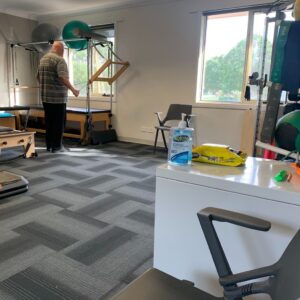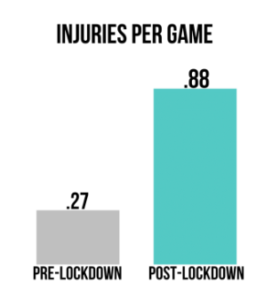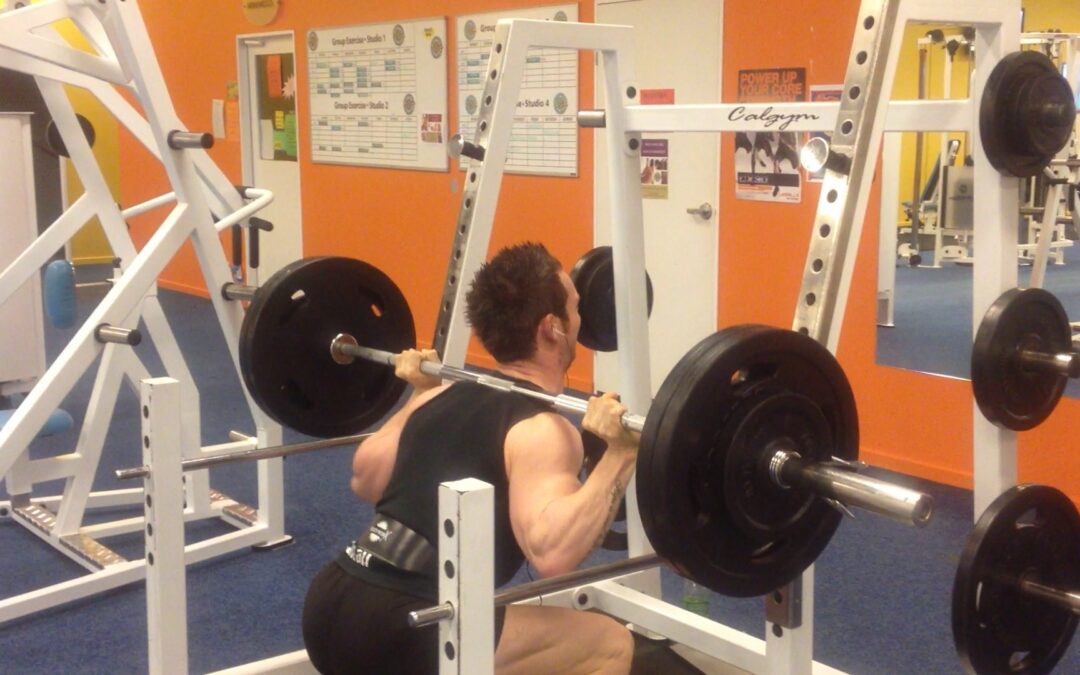
To the excitement of many, the restrictions surrounding the use of gyms have eased, meaning they have reopened as of June 22 within Victoria.
However, although we are all eager to pick up the weights and jump on the machines again, it is worth being vigilant of the potential changes that may have occurred following periods of inactivity and sedentary behaviour during lockdown. Many of us have been working from home, had our sport cancelled or found it hard to stay motivated during these unforeseen circumstances.
When we exercise less, our physical condition declines, which can increase the risk of injury. So, how do we return to exercise safely?
Deconditioning: what is it?
Deconditioning is the fundamental principle behind the ‘use it or lose it’ mentality. Our bodies attempt to hold onto our strength, fitness and ability for as long as possible. However, inactivity for most of us will result in a reduction of muscular strength and cardiovascular fitness leading to a decline in our physical (and sometimes mental) health. This process is known as ‘deconditioning’.
Most studies suggest that significant deconditioning can occur over a period of 3 months with loss of at least 70% in muscle strength and almost full decline in aerobic capacity within a few weeks.
Returning to high-intensity activities or increasing workout loads too quickly can increase the risk of injury when our reduced capacity is not considered.
Build up to it!
When it comes to returning to exercise safely, the recommendation is to build up to previous levels of exercise. This can be done by reducing the intensity or load to 50% of pre-lockdown standards and increasing at increments of 10-15% each week. Additionally, a specific warm up and cool down should always be performed with any form of exercise. This can include light cardiovascular exercises, gentle stretching and sets of each exercise with reduced or no weight.
Incremental increases in each activity/exercise is the best method to reach and surpass pre-pandemic levels of fitness while reducing the risk of injury. Be sure to modify exercises, loads, intensity and duration of workouts based on how you are feeling. It is not uncommon to feel sore, tired or ‘tight’ following return to exercise as our bodies need to adapt to the change. In most cases, your body will heal itself, however, if pain becomes increasingly worse or persists over a few days it is wise to have it checked by a health professional.
Following Germany’s Bundesliga football competition resumption, Dr Joel Mason injury rates tripled as some clubs had only three weeks of preparation.

In conclusion, as eager as we all are to get back to our usual exercise routines, it is important to tame our eagerness to stay safe and healthy. Remember, the benefits of regular exercise far outweigh the potential risks of returning to the gym. We just need to maintain a realistic view of the current condition of our bodies, not our ability from 3 months ago.
If you have any questions about the best approach to returning to exercise, the team at Bellarine/Torquay Sports Medicine Centre are more than happy to help. You can contact us via the following phone numbers: Bellarine Sports Medicine Centre on 5251 5724 or myself directly on 0414 438 345. We continue to endeavour to keep you active, healthy and happy, wherever that may be.
